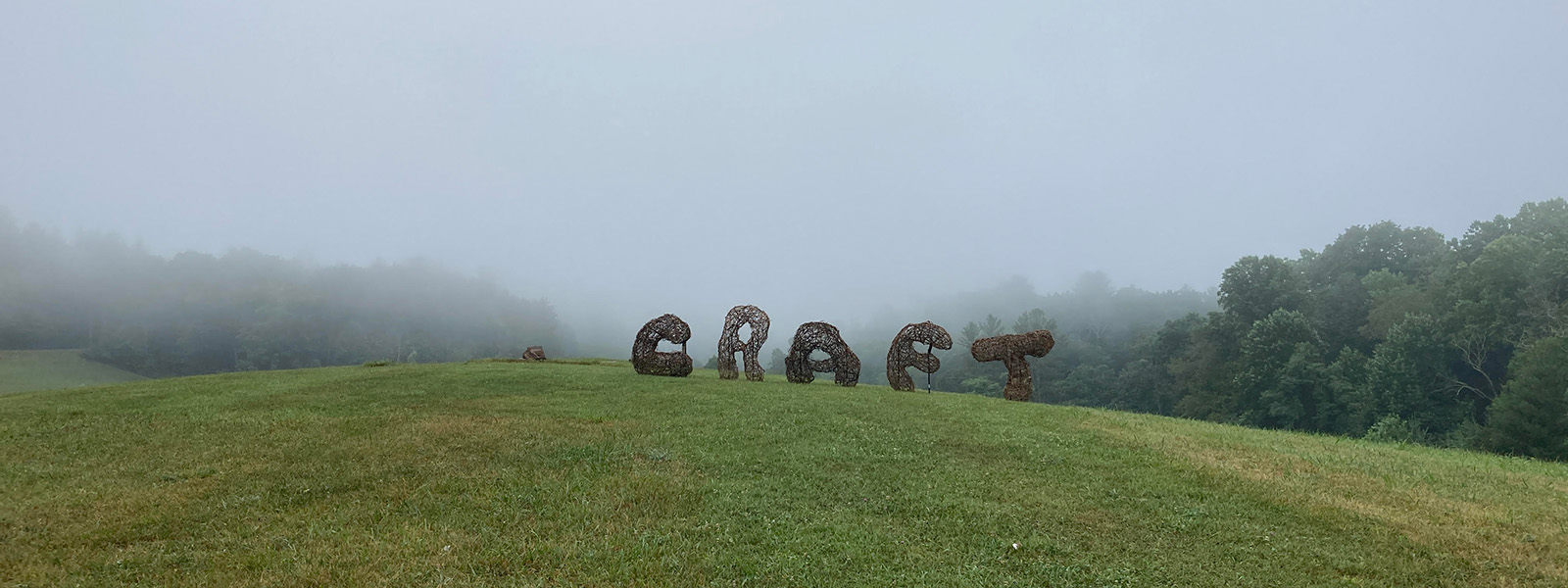Kenan Institute for the Arts supports UNCSA faculty members by expanding their creativity and pedagogy through Penland workshops
Nestled in the North Carolina mountains, Penland School of Craft is a nationally-recognized center for craft education, offering workshops for artists of all ages and abilities, artists’ residencies and community programming. In 2024 the Thomas S. Kenan Institute for the Arts began to reimagine its longstanding relationship with Penland by creating new ways for members of the UNCSA community to foster their artistic practice.
With support from the Kenan Institute for the Arts, three faculty members traveled to Penland over the summer of 2024 to attend intensive craft workshops taught by respected artists from around the world. Division of Liberal Arts professor and Director of the Arts Entrepreneurship Minor and First Year Seminar program Betsy Towns participated in a clay workshop with Kensuke Yamada. Director of the High School Visual Arts program Will Taylor studied letterpress with Alexander Lee Lenderman and Brad Vetter. Jessica Singerman, who teaches art direction in the School of Filmmaking, spent time learning and creating in a glass blowing studio under the direction of Jessica Jane Julius and Erica Rosenfeld.
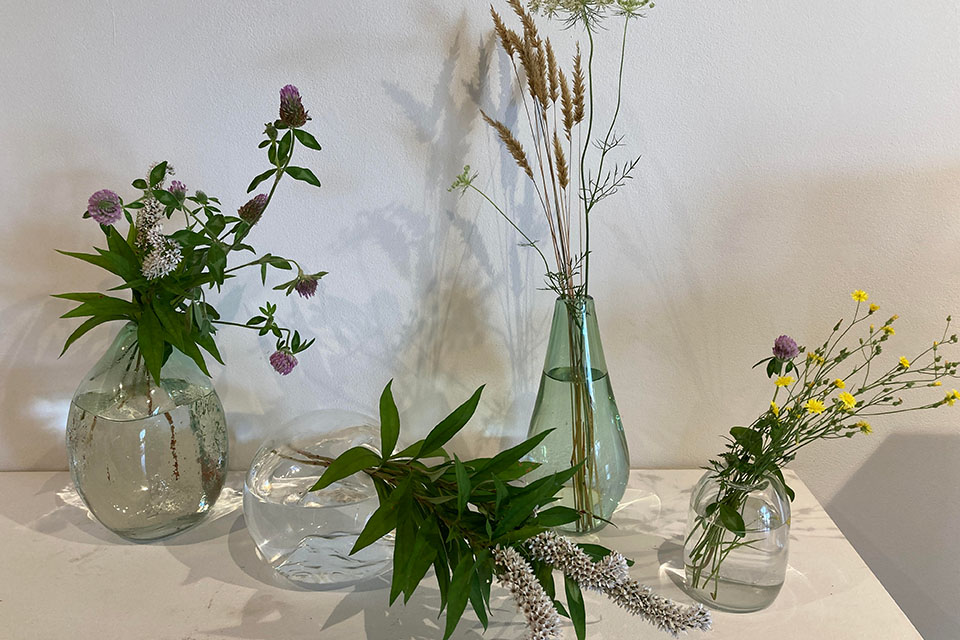
Jessica Singerman's glass blowing project from Penland School of Craft. / Photo courtesy of Singerman
“It is important to continually create opportunities for the artistic development of arts educators,” says Kenan Institute Executive Director Kevin Bitterman. “By supporting these faculty members’ creative journeys, we not only encourage them to nurture their passion but also give them the opportunity to deepen and expand their pedagogical approach.”
Fueling artistic fire
“It was completely outside the realm of what I normally do,” says Singerman of her two-week experience at Penland. With formal training as a painter, she has gravitated toward installation work (video, sound and sculpture) in recent years. “I was drawn to the glass blowing workshop because it was dealing with installations, but with a new medium,” Singerman explains. “It also offered the chance to work collaboratively, and I was curious to see how that played out.”
Singerman describes her two weeks in the glass blowing hot shop as an intense experience. Late nights, loud music and an unshakable, frenetic energy were challenging at times, but the teamwork and collaboration made the experience well-worth it. “I came in with no expectations,” she says. “But there was so much teamwork and collaboration… it was amazing. You have to rely on other people to help you do the physical work of glass blowing.”
Focused less on collaboration and more on personal technique, Towns selected her workshop, in part, based on the work of her instructor. “His work interested me because he is so focused on figures. He does a lot of stacking and building with one element on top of another,” she describes. “I use a lot of that in my own [ceramics], but had never [formally] studied with someone else.”
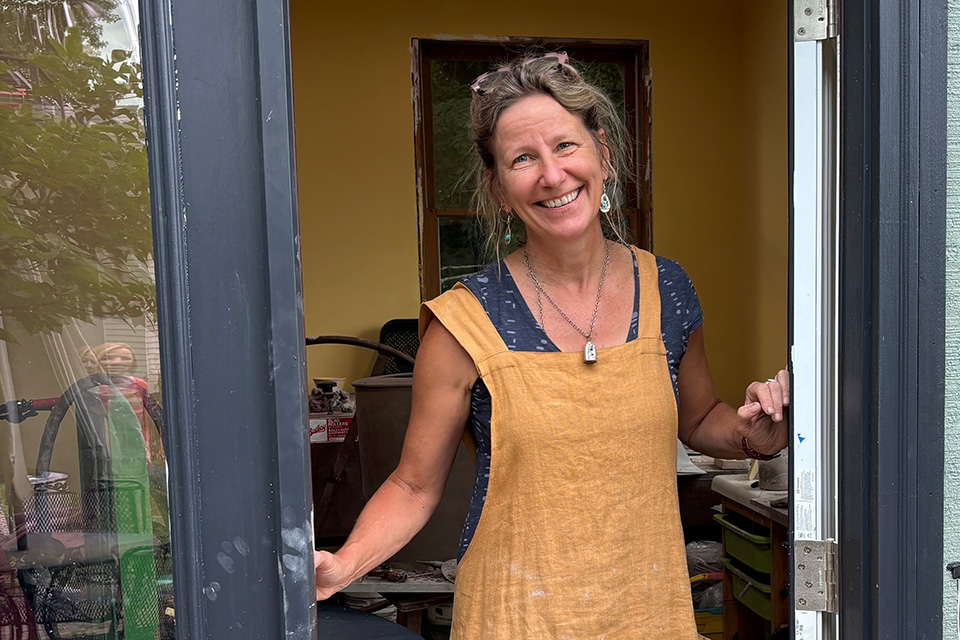
Faculty member Betsy Towns at the Penland School of Craft. / Photo courtesy of Towns
Towns’ current body of work, greatly influenced by her time at Penland, is a collection of large-scale ceramics that highlight species affected by climate change and the action of humans: species in retreat (shrinking) and species on the march (growing). They are led by four horsemen of the climate apocalypse, which Townes began constructing at Penland, and four heroes of environmental protection. “The experience at Penland gave me the space to think about how I want to bring human figures [like the horsemen and heroes] back into my work,” says Towns. It also jump started her upcoming sabbatical, during which she hopes to complete and exhibit the collection.
Taylor’s workshop integrated new and old techniques around the art of printing and letterpress. “Penland allowed me the physical space and, more importantly, the mental space to experiment with new work,” says Taylor, who learned and created alongside a small group of ten artists during his weeklong stay. The workshop began with heavy instruction, giving way to creation as the week progressed. “Letterpress machines are not being made any more,” explains Taylor, “but you can refurbish them and learn to work with them.” Alongside the old presses, workshop attendees used laser technology to design cuts to be used as reliefs (the raised part of the printing surface that holds the ink) for the press.
While the workshop offered Taylor a crash course in working a press and broadened his toolkit of materials and media, the community in which he engaged was equally valuable. “I think it’s important for all artists to get out of their silos and workspaces and interact with other artists,” he says. “Penland offered me that community and a strong networking experience.”
Inspiration for the classroom
Taylor returned to campus for the fall semester with ideas to continue incorporating printmaking into the Visual Arts curriculum. “We have a laser cutter on campus,” he says. “I thought through how that might carry over into other relief printmaking processes.” He also brought back inspiration for his approach to teaching. “There is an educational approach to attending these workshops,” he explains. “Not just in terms of content, but in how others approach their instruction… how they deliver the content, engage with the students and offer critique. It was refreshing to be on the other side of that as a student myself.”
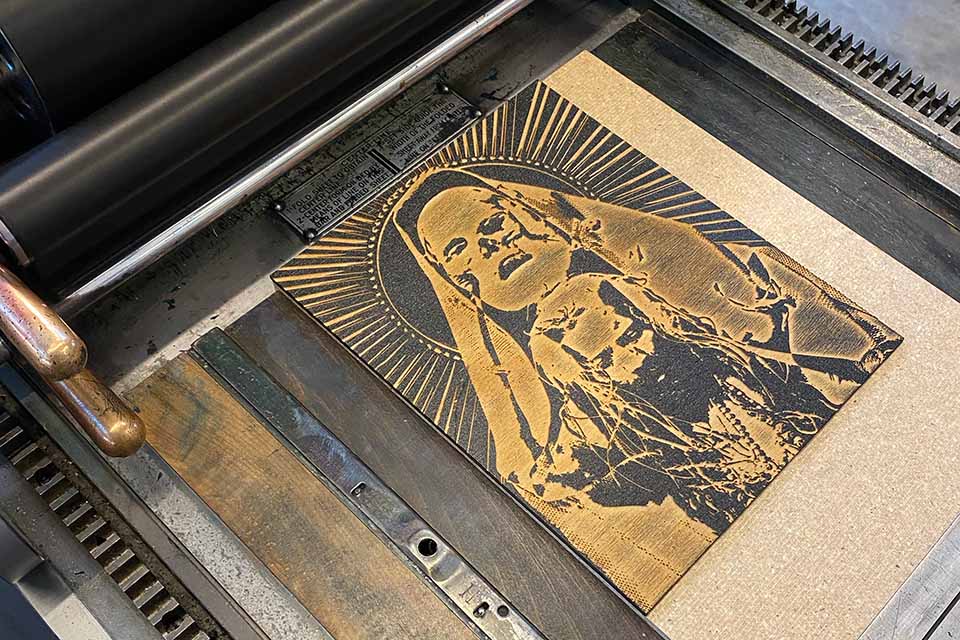
Will Taylor's printmaking project at Penland School of Craft. / Photo courtesy of Taylor
Singerman agrees that it was a nice change of pace to be in student mode. “I loved my teachers in the glass shop,” she remembers. “They were friends and also collaborators. I have been self-reliant as an artist for years, but I’ve been more open to collaborating with my students since returning [from Penland].” Singerman also leveraged a newfound friendship to create a unique educational opportunity for her students. “I met glass instructor Nisha Bansil at Penland and invited her to campus for a new collaborative project and to present in the School of Filmmaking’s Symposium series,” she says. In November, Bansil spoke with students about her work in cymantics—the study of shapes and patterns in a particular medium, such as liquid or powder, created by sound vibrations.
As she reflected on her Penland workshop, Towns focused on how to arrange projects to make them more effective for student learning. “Each small lesson my instructor gave was a very smart way to introduce a larger concept that would come up later,” she recalls. “I thought a lot about staging and sequencing in my own classroom.” She soon found an opportunity with art history.
By supporting these faculty members’ creative journeys, we not only encourage them to nurture their passion but also give them the opportunity to deepen and expand their pedagogical approach.
Kevin Bitterman
“Early art history can feel distant and it is sometimes difficult for students to imagine what the actual making process was like so long ago,” she explains. To help students connect, Towns brought in clay and other materials. Each student was encouraged to make a small ceramic object that responded to a particular focus or worry they were experiencing, just as early art often responded to major concerns of the time. “It was a literal example of my learning,” she adds. “I was able to break things down into smaller elements that tied into what my students were learning about that moment of history.”
Reflection and momentum
Being in a space where people were so committed to honesty and camaraderie was refreshing, says Towns. “We shared stories of feeling like our work wasn’t measuring up. Even our instructor expressed his own self-doubt,” she says. “I found myself branching into something that was a stretch for me in terms of my work in recent years. It was vulnerable, and it was challenging.”
“My workshop was very technical, and a big learning curve for me,” adds Singerman. “I allowed myself to do something crazy. I decided to explore something new because I was fortunate enough to have a scholarship [from the Kenan Institute], and it was an eye-opening experience.”
“Penland is in such a unique setting,” says Taylor. “To have that time set aside to be on site, to work in those studios 24/7, is beautiful. The fact that the Kenan Institute supported this and continues to seek additional opportunities to support faculty is a testament to the important work they do.”
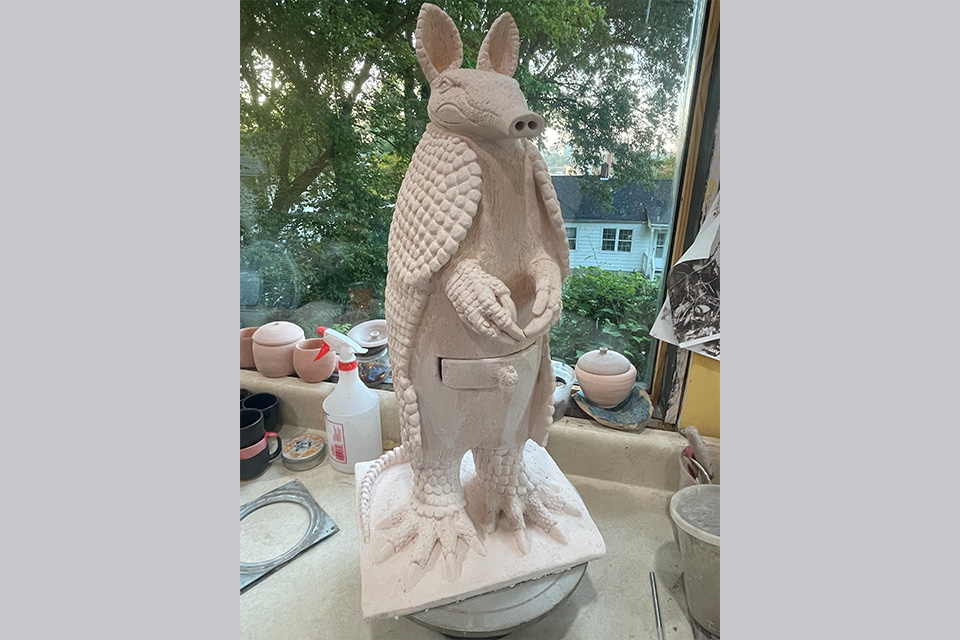
Towns' ceramics work from her time at Penland School of Craft. / Photo courtesy of Towns
And indeed, more opportunities are on the horizon. “We continue to hear from faculty that their personal artistic pursuits, whether new endeavors or familiar practice, have a direct and profound impact in the classroom for student-artists,” says Bitterman. “We will continue to seek new avenues to support faculty research, learning and creation and are excited to continue evolving our relationships with premier arts organizations like Penland School of Craft.”
Get the best news, performance and alumni stories from UNCSA.
SUBSCRIBE TO OUR NEWSLETTERS(OPENS IN NEW TAB)(OPENS IN NEW TAB)(OPENS IN NEW TAB)(OPENS IN NEW TAB)(OPENS IN NEW TAB)(OPENS IN NEW TAB)(OPENS IN NEW TAB)(OPENS IN NEW TAB)(OPENS IN NEW TAB)(OPENS IN NEW TAB)(OPENS IN NEW TAB)(OPENS IN NEW TAB)(OPENS IN NEW TAB)(OPENS IN NEW TAB)(OPENS IN NEW TAB)(OPENS IN NEW TAB)(OPENS IN NEW TAB)(OPENS IN NEW TAB)(OPENS IN NEW TAB)(OPENS IN NEW TAB)(OPENS IN NEW TAB)(OPENS IN NEW TAB)(OPENS IN NEW TAB)(OPENS IN NEW TAB)(opens in new tab)(opens in new tab)
January 24, 2025

